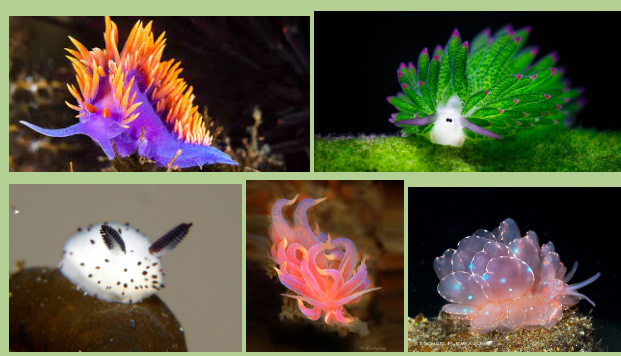Animal of the Week: The Sea Slug


General Overview
Sea slug is a common name for some marine invertebrates with varying levels of resemblance to terrestrial slugs. The name "sea slug" is most often applied to nudibranchs, as well as to other marine gastropods without obvious shells. Most sea slugs are partially translucent, though the similarities end there. Sea slugs display an enormous variety of appearances, each differing in body shape, color, and size.
Interesting Features
Nudibranchs possess the unique ability to store organelles from their prey. For example, despite their soft bodies and delicate appearances, nudibranchs are immune to the stinging nematocysts of jellyfish, and prey on the creatures. Through their ability to store organelles, they steal the stinging ability of their prey, recycling the nematocysts into the tentacle-like cerata on their backs. Most notably, the Blue Glaucus (glaucus atlanticus) executes this process with the Portuguese man-o-war, one of the deadliest jellyfish in the world.

However, this ability is not limited to the consumption of jellyfish. For example, Costasiella Kuroshimae, nicknamed the “leaf sheep”, absorbs the chloroplasts of the algae it consumes, and is the only non-plant organism in the world able to photosynthesize.

Presence in Pop Culture
The unique and beautiful appearances of sea slugs have caused many species to gain traction online, especially when they’re cute. Most notably, the Jorunna parva, given the moniker the Sea Bunny. The slug became incredibly popular among Japanese internet users, who fell in love with the creature's adorable bunny-like appearance, which includes what resembles fur, tall ears, and a cotton-tail.

The sea slug is also present in the popular video game Pokemon, as characters Shellos as well as its evolution Gastrodon, are inspired by sea slugs.
